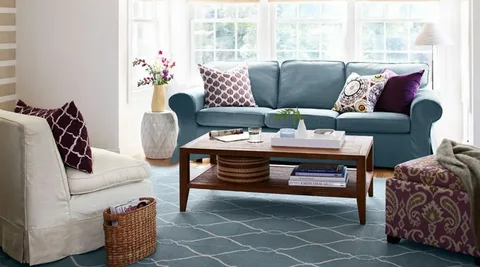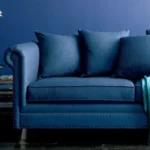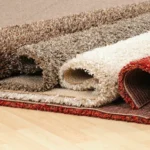Decorating 101: Interior Design Basics- Interior design is more than just arranging furniture aesthetically in a space; it’s an art that involves creating a harmonious and functional environment.
Whether you’re a design enthusiast or a novice looking to enhance your living space, understanding the basics of interior design is crucial.
Let’s embark on a journey through the fundamental principles and practical tips that will transform any space into a personalized haven.
- Definition and Importance
- Evolution Over Time
- Key Principles of Interior Design
- Understanding Color Schemes
- Furniture Arrangement Tips
- Importance of Lighting in Interior Design
- Texture and Patterns in Interior Design
- Incorporating Personal Style
- Budget-Friendly Interior Design Ideas
- Sustainable Interior Design Practices
- Technology in Interior Design
- Creating Functional and Stylish Storage
- Interior Design for Different Spaces
- The Role of Interior Designers
- Trends in Interior Design
- Final Thoughts
- FAQs (Frequently Asked Questions)
Definition and Importance
Interior design is the art and science of enhancing the interior of a building to create a more aesthetically pleasing and functional environment. It goes beyond selecting color palettes and furniture; it involves understanding the occupants’ needs and optimizing the available space.
The significance of interior design lies in its ability to positively impact our well-being, productivity, and overall quality of life.
RELATED: 9 Design Tips for Blue Couches in Living Rooms
Evolution Over Time
The field of interior design has evolved significantly throughout history. From the opulent designs of ancient civilizations to the minimalist movements of the 20th century, interior design reflects cultural shifts and societal changes.
Today, it encompasses a diverse range of styles and approaches, allowing individuals to express their personalities through their living spaces.
Key Principles of Interior Design
Balance
Balance is a fundamental principle in interior design, ensuring that visual weight is distributed evenly in a space. Achieving balance can be through symmetrical arrangements or asymmetrical compositions, depending on the desired aesthetic. This principle creates a sense of stability and harmony within a room.
Harmony
Harmony in interior design involves creating a cohesive and unified look. It brings together elements such as color, texture, and shape to establish a pleasing visual flow. Achieving harmony requires careful consideration of how different elements interact and complement each other.
Contrast
Contrast adds interest and depth to a space by highlighting differences between elements. This can be achieved through the use of color, texture, or scale. Thoughtful contrast prevents a room from feeling monotonous and adds visual excitement.
Rhythm
Rhythm establishes a visual flow that guides the eyes through a space. It can be achieved through repetition of elements, such as patterns or colors, creating a sense of continuity. Rhythm contributes to the overall cohesion of the design.
Unity
Unity brings all the design elements together to create a cohesive and well-integrated space. It ensures that the various components work harmoniously to convey a unified message or theme. Unity is essential for a space to feel complete and well-designed.
Understanding Color Schemes
Impact on Mood and Perception
Colors have the power to evoke emotions and influence our perceptions of a space. Warm colors like red and orange can create a cozy and energetic atmosphere, while cool colors like blue and green promote calmness and relaxation. Understanding color psychology is crucial when selecting a color scheme for different rooms.
Popular Color Combinations
Choosing the right color combinations can be a game-changer in interior design. Whether it’s a monochromatic scheme for a subtle look or a complementary scheme for a bold statement, the interplay of colors sets the tone for the entire space. Neutral tones with pops of accent colors are a timeless choice for creating balance.
Furniture Arrangement Tips
Maximizing Space
In smaller spaces, strategic furniture arrangement is key to optimizing functionality. Multipurpose furniture, such as ottomans with storage, can maximize storage while serving multiple functions. Additionally, choosing furniture with clean lines and a light color palette can create an illusion of spaciousness.
Focal Points
Every room needs a focal point – a visually dominant element that draws attention. It could be a fireplace, a statement piece of furniture, or even a striking piece of art. A well-chosen focal point anchors the room and serves as a starting point for arranging other elements.
Flow and Functionality
Effective furniture arrangement considers the natural flow of movement within a space. Avoid blocking pathways and ensure that furniture arrangements support the intended functionality of the room. For example, in a living room, seating should facilitate conversation and create a welcoming atmosphere.
Importance of Lighting in Interior Design
Natural vs. Artificial Lighting
Lighting plays a crucial role in interior design, affecting both the ambiance and functionality of a space. Natural light brings warmth and vitality, while artificial lighting allows for control over the mood. Understanding the different types of lighting and their placement is essential for creating a well-lit and inviting environment.
Choosing the Right Fixtures
Selecting the right light fixtures can enhance the overall design aesthetic. Consider the function of each space when choosing lighting – task lighting for work areas, ambient lighting for general illumination, and accent lighting to highlight specific features. Mixing different types of lighting creates a layered and dynamic effect.
Texture and Patterns in Interior Design
Adding Visual Interest
Textures and patterns add depth and visual interest to a room. Whether it’s a textured throw pillow, a patterned rug, or textured wall coverings, these elements break up monotony and create a more engaging environment. Mixing different textures adds richness to the overall design.
Avoiding Overstimulation
While textures and patterns are essential, moderation is key. Overloading a space with too many patterns or conflicting textures can create a chaotic and overwhelming atmosphere. Striking a balance between simplicity and complexity ensures a visually appealing result.
Incorporating Personal Style
Balancing Trends with Personal Taste
While staying informed about design trends is valuable, it’s equally important to infuse personal style into the design. Your home should reflect your personality and preferences. Consider incorporating personal mementos, heirlooms, or DIY projects to make the space uniquely yours.
DIY Projects and Customization
Adding a personal touch to your space doesn’t always require a hefty budget. Engage in DIY projects to create custom decor items or repurpose existing furniture. Whether it’s painting an old dresser or crafting handmade accessories, these personalized touches contribute to a one-of-a-kind interior.
Budget-Friendly Interior Design Ideas
Thrift Shopping and Upcycling
Achieving a stylish interior doesn’t have to break the bank. Thrift shopping and upcycling offer budget-friendly alternatives to brand-new furniture and decor. Explore local thrift stores or online platforms for unique finds that can be transformed with a bit of creativity.
Affordable Décor Options
Affordable decor doesn’t mean sacrificing style. Many retailers offer budget-friendly options that align with current trends. Look for sales, discounts, and clearance items to stretch your budget further. Mixing high and low-end pieces can create a curated and eclectic look.
Sustainable Interior Design Practices
Eco-Friendly Materials
As environmental consciousness grows, so does the demand for sustainable interior design. Choose furniture and materials made from recycled or renewable resources. Look for certifications like FSC (Forest Stewardship Council) for wood products and GREENGUARD for low-emission materials.
Energy-Efficient Solutions
Incorporating energy-efficient solutions not only benefits the environment but also reduces long-term costs. Opt for LED lighting, invest in energy-efficient appliances, and consider smart home technologies that allow for better control over energy consumption.
Technology in Interior Design
Virtual Reality Tools
Advancements in technology have revolutionized the way interior design is conceptualized. Virtual reality tools allow homeowners and designers to visualize spaces before making decisions. This technology provides a realistic preview of how furniture, colors, and layouts will look in a particular room.
Smart Home Integration
The integration of smart home devices has become a prominent aspect of modern interior design. From smart thermostats to voice-activated lighting, these technologies enhance convenience and efficiency. Consider incorporating smart home features that align with your lifestyle.
Creating Functional and Stylish Storage
Innovative Storage Solutions
Efficient storage is a cornerstone of good interior design. Explore innovative storage solutions that make the most of available space, such as built-in shelving, under-bed storage, and multi-functional furniture. Customized storage solutions cater to specific needs and contribute to a clutter-free environment.
Decluttering Tips
A clutter-free space is essential for a well-designed interior. Regularly decluttering and organizing belongings not only enhances visual appeal but also promotes a sense of tranquility. Embrace the minimalist philosophy of “less is more” to create a serene and balanced atmosphere.
Interior Design for Different Spaces
Residential Spaces
Designing residential spaces involves understanding the unique needs and preferences of the inhabitants. Consider factors such as family size, lifestyle, and personal tastes when creating a design plan. Residential interiors offer an opportunity for personalization and self-expression.
Commercial Spaces
Commercial interior design focuses on creating functional and aesthetically pleasing spaces for businesses. Considerations include brand identity, employee well-being, and creating an inviting atmosphere for clients or customers. Practicality and professionalism are key in commercial design.
The Role of Interior Designers
Collaboration with Professionals
While many individuals enjoy DIY interior design projects, there’s a distinct advantage to collaborating with professionals. Interior designers bring expertise in space planning, color theory, and sourcing materials. Their insights can elevate a design, ensuring a cohesive and well-executed result.
DIY vs. Hiring a Designer
The decision to tackle a design project independently or hire a professional depends on various factors, including budget, time constraints, and personal preferences. DIY projects can be fulfilling, but for complex or large-scale designs, a professional designer can provide valuable guidance and expertise.
Trends in Interior Design
Current and Upcoming Trends
Interior design trends are ever-evolving, influenced by societal shifts, technological advancements, and global influences. Stay updated on current trends but approach them with a discerning eye. Incorporate trends that resonate with your style, and don’t be afraid to put a unique twist on them.
Timeless Design Elements
While trends come and go, certain design elements stand the test of time. Classic furniture pieces, neutral color palettes, and timeless architectural details contribute to a design that remains relevant and sophisticated. Combining timeless elements with trendy accents creates a balanced and enduring aesthetic.
Final Thoughts
In conclusion, mastering the basics of interior design empowers individuals to transform their living spaces into personalized and functional havens. From understanding key principles to embracing current trends, the journey of designing an interior is both exciting and rewarding.
Whether you embark on a DIY adventure or collaborate with a professional, the result should reflect your unique style and enhance the overall quality of life within your space.
FAQs (Frequently Asked Questions)
What is the primary purpose of interior design?
Interior design aims to enhance the aesthetic appeal and functionality of interior spaces, creating environments that positively impact well-being and quality of life.
How do colors affect the mood of a room?
Colors can evoke emotions and influence perceptions; warm colors create energy and coziness, while cool colors promote calmness and relaxation.
Is it necessary to hire an interior designer?
While DIY projects are popular, hiring an interior designer can provide expertise in space planning, color theory, and sourcing materials, ensuring a professional and cohesive result.
What are some budget-friendly interior design ideas?
Thrift shopping, upcycling, and mixing high and low-end pieces are effective ways to achieve a stylish interior on a budget.
How can I make my space more sustainable?
opt for eco-friendly materials, choose energy-efficient solutions, and consider smart home technologies to create a more sustainable interior.
What role does lighting play in interior design?
Lighting impacts the ambiance and functionality of a space; natural light brings warmth, while well-chosen fixtures provide control over the mood.
Are there timeless design elements in interior design?
Classic furniture pieces, neutral color palettes, and timeless architectural details contribute to a design that remains relevant and sophisticated over time.
How important is decluttering in interior design?
Decluttering is crucial for a well-designed space, enhancing visual appeal and promoting a sense of tranquility.
What are the key principles of furniture arrangement?
Furniture arrangement principles include maximizing space, creating focal points, and ensuring flow and functionality within a room.
Can I incorporate my personal style into interior design trends?
Absolutely! Balancing trends with personal taste is essential to create a space that reflects your personality and preferences.




